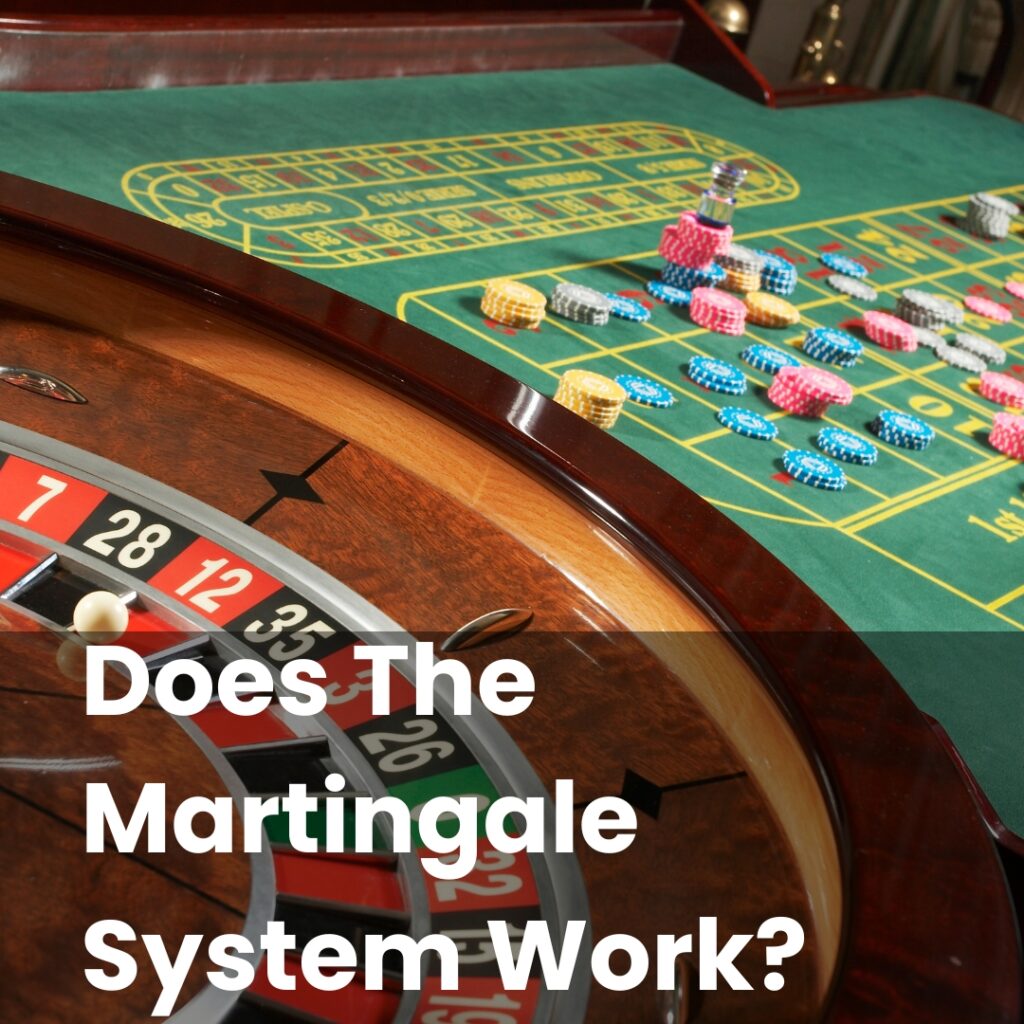The Martingale system is a strategy sometimes used by players in games like roulette, with the aim of increasing the likelihood of recovering losses. The basic principle involves doubling the stake after each loss. This approach is designed to recover losses if a win eventually occurs.
However, the effectiveness of the Martingale system may vary. It is important for players to be informed about how it operates, as well as its potential advantages and limitations, to understand if it aligns with their strategy. This post will outline the workings of the Martingale system, providing a balanced view of its pros and cons.
What Is The Martingale Betting System?
The Martingale betting system is a straightforward strategy some players use when gambling, particularly in games with even-money bets, like roulette. The core concept of the system is to try and help players potentially recover their losses through a series of increasing bets.
Here’s how it works: each time a player loses, they double their previous stake. This means if they start with a bet of £1 and lose, their next bet will be £2. If they lose again, the next bet would be £4, and so on. The main concept of this approach is that a win may eventually cover all previous losses and award a potential profit equal to the original stake.
It’s important to note that the Martingale system is usually used for bets where players have nearly a 50:50 chance of winning, like betting on red or black in roulette. This system relies on the notion that a player’s chances of winning are close to equal in each round.
While the Martingale betting system may seem appealing because of its simplicity, there are certain risks and limitations that players need to consider before trying it out. Understanding how the system works is the first step in evaluating whether it suits a player’s approach and budget.
Martingale System Example
To see how the Martingale system works in action, consider a player at a roulette table, starting with an initial bet of £1 on red. This may provide a nearly even-money chance of winning.
If the player wins on the first spin, they gain £1 and end the round with a profit. Simple enough, right? But let’s see what happens if the player loses.
Upon losing, the player doubles their stake on the next spin, betting £2 on red again. If they lose a second time, they double the previous bet and place £4 on the next round. They continue this pattern, doubling each unsuccessful bet.
Suppose the player wins on their fourth attempt after betting £8. This potential win would give them £16, which would cover all their prior losses (£1 + £2 + £4 = £7) and leave them with a net gain of £1.
While this example shows how the Martingale system intends to recover losses with a single win, it also highlights the rapid growth of bets after multiple losses. Players may want to consider both their budget and any table limits that might restrict their ability to keep doubling their bets. It’s essential for players to approach this system responsibly; players should never bet more than they are comfortable with losing.
Does The Martingale Betting System Work?
The effectiveness of the Martingale betting system is a topic that may spark debate among bettors. While the system may appear to provide favourable results, it may be beneficial to examine its practical application.
One of the main ideas behind the system is that recovering losses through doubling stakes sounds reassuring. In theory, a single win after a series of losses may lead to a net gain. However, this strategy relies on the assumption that players have unlimited funds and no betting limits, which is rarely the case in reality.
In practice, players are likely to encounter table limits and may find their funds depleting quickly after just a few rounds of losses.
Additionally, the system does not change the fundamental odds of the game. The house edge remains the same, meaning that over time, the casino or bookmaker is statistically favoured to win.
The Martingale system may work under specific conditions, but players should approach it with their budget and the game rules in mind. Understanding these factors may help them make more informed decisions about whether this strategy aligns with their preferences.
Which Is The Best Roulette Betting System?
As roulette is, first and foremost, a game of chance, there is no “best” betting system. Choosing a betting system mostly depends on the player’s personal preferences. There is no one-size-fits-all answer, but understanding different systems may help players find one that fits their style.
The Martingale system may appeal to those who prefer a straightforward betting approach, but it comes with considerable potential risks due to the rapid increase in stakes if you lose multiple times. Given these risks, it’s essential for players to set limits, manage their bankroll carefully, and keep responsible gambling practices in mind.
Another common system is the Fibonacci system, where players increase their bets based on the famous sequence. This approach is more gradual than the Martingale, providing a slower progression of bet sizes, which might appeal to those with a more conservative approach.
For players who enjoy a structured system without significant bet increases, the D’Alembert system could be appealing. It involves adjusting bets by a single unit after losses or wins, offering a more tempered risk strategy.
Ultimately, the best betting system is one that aligns with a player’s budget, risk comfort, and objectives. It’s important for players to remember that no system can overcome the house edge, so responsible gambling practices should always be part of their approach.




